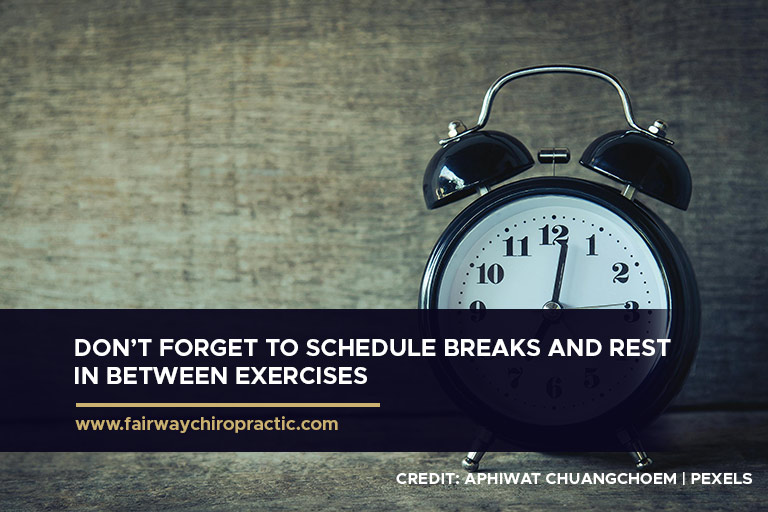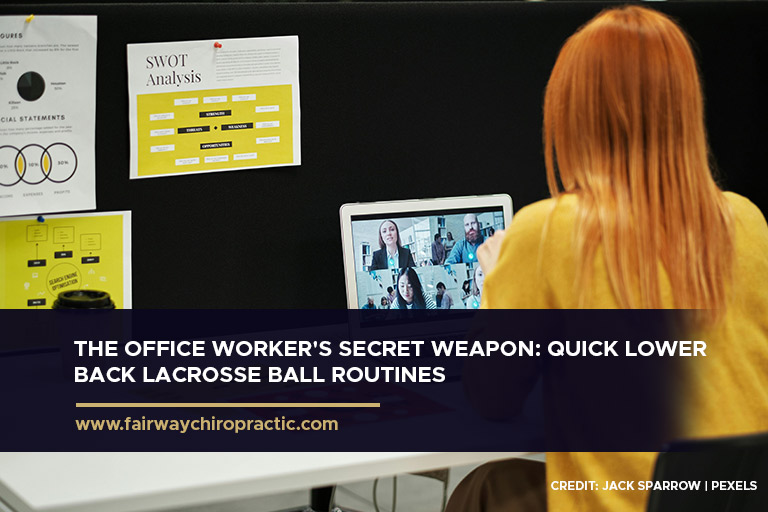The modern office environment, characterized by long hours of sitting and minimal movement, significantly contributes to lower back pain among workers.
This discomfort not only affects productivity but also overall quality of life. Fortunately, there is a simple yet effective tool that can alleviate this pain: the lacrosse ball. Integrating quick lower back routines using a lacrosse ball into daily work breaks can offer immediate relief and long-term benefits, making it an indispensable accessory for any office worker.
The Impact of Sedentary Lifestyle

The sedentary lifestyle prevalent in modern office settings brings with it a host of musculoskeletal issues, notably in the lower back. Here’s what it does to your body:
-
Muscle Weakness and Imbalance
Continuous sitting leads to the weakening and imbalance of the lumbar and core muscles. This imbalance places undue stress on the lower back, causing discomfort and pain.
-
Reduced Blood Circulation
A sedentary lifestyle contributes to decreased blood circulation, which can slow down the healing process of strained muscles and contribute to the feeling of stiffness and discomfort.
-
Increased Pressure on Spinal Discs
Prolonged sitting increases the pressure on the spinal discs, potentially leading to disc degeneration and associated pain over time.
-
Decreased Flexibility
Lack of movement results in reduced flexibility in the hips and spine, further exacerbating lower back issues.
-
Psychological Effects
Chronic back pain can have significant psychological effects, including increased stress, anxiety, and depression, which can, in turn, worsen the perception of pain.
What Myofascial Release Can Do for You
Myofascial release, particularly through the use of tools like a lacrosse ball, plays a critical role in managing and alleviating lower back pain. Its benefits are extensive, offering both immediate relief and long-term health improvements:
-
Alleviates Muscle Tightness
Applying pressure to the myofascial tissue helps in breaking up knots and tight spots in muscles, providing immediate relief from discomfort and improving muscle function.
-
Improves Blood Circulation
Myofascial release techniques increase blood flow to the targeted areas, enhancing oxygen and nutrient delivery, which aids in the recovery and healing of the muscles.
-
Enhances Mobility and Flexibility
Regular use of myofascial release techniques can significantly improve range of motion and flexibility by loosening up tight muscles and fascia that restrict movement.
-
Reduces Risk of Injury
By maintaining muscle health and flexibility, myofascial release can decrease the likelihood of muscle strains and other injuries that can occur from a sedentary lifestyle.
-
Supports Chiropractic Adjustments
Myofascial release can complement chiropractic care by preparing muscles and tissues for adjustment, making the treatments more effective and lasting.
-
Promotes Overall Well-Being
Beyond physical benefits, the relief from pain and stiffness can improve mental health, reduce stress levels, and contribute to a greater sense of well-being.
Lacrosse Ball Routines for the Lower Back
-
Starting With Safety
Before beginning any routine, it’s crucial to ensure safety to avoid further injury. Avoid placing the ball directly on the spine. Instead, focus on the muscles surrounding the spine and the lower back area. Listen to your body and start with gentle pressure, gradually increasing as your muscles adapt.
-
Basic Techniques
-
Wall Press
-
Stand against a wall with the lacrosse ball positioned between your lower back and the wall. Gently move your body up and down, allowing the ball to massage the lower back area. This technique is perfect for beginners and offers a controlled way to apply pressure.
-
Chair Roll
While sitting, place the lacrosse ball under one side of your lower back. Lean slightly into the ball and make small movements to roll the ball across your lower back muscles. This method is ideal for quick breaks during work.
-
Floor Glides
Lie on the floor with your knees bent and place the lacrosse ball under your lower back, avoiding the spine. Gently shift your weight to roll the ball across the tight areas. This position allows for deeper pressure and is effective for targeting specific trigger points.
-
Advanced Technique
For those who have become accustomed to the basic techniques and are seeking deeper relief:
-
Cross-Leg Press
Sit on the floor and place the lacrosse ball under one side of your lower back. Cross the leg on the same side over the other leg to increase pressure. Lean into the ball and hold for 30-60 seconds before switching sides.
Incorporating Routines into Daily Life

-
Scheduling Breaks
The key to maximizing the benefits of lacrosse ball routines is consistency. Schedule short breaks throughout your workday specifically for these exercises. Even five minutes can make a significant difference in relieving tension and preventing stiffness.
-
Combining with Other Techniques
For comprehensive care, combine lacrosse ball routines with chiropractic care and fitness activities and exercises. Chiropractic adjustments can address alignment issues and enhance the effectiveness of myofascial release, while a regular fitness routine strengthens the core and back muscles, further reducing the risk of lower back pain.
Quick lower back lacrosse ball routines offer a practical and efficient way to combat the adverse effects of a sedentary office lifestyle. By dedicating just a few minutes each day to these exercises, office workers can significantly improve their lower back health, enhance productivity, and enjoy a higher quality of life.
Remember, consistency is key, and when combined with professional chiropractic care and regular fitness activities, these routines can serve as a powerful tool in maintaining overall back health.
For personalized advice and treatment options, including chiropractic adjustments and tailored exercise programs, contact Fairway Chiropractic Centre. Embrace the power of self-care and take the first step towards a pain-free back today.
Get in touch with us at 519-748-5535.










